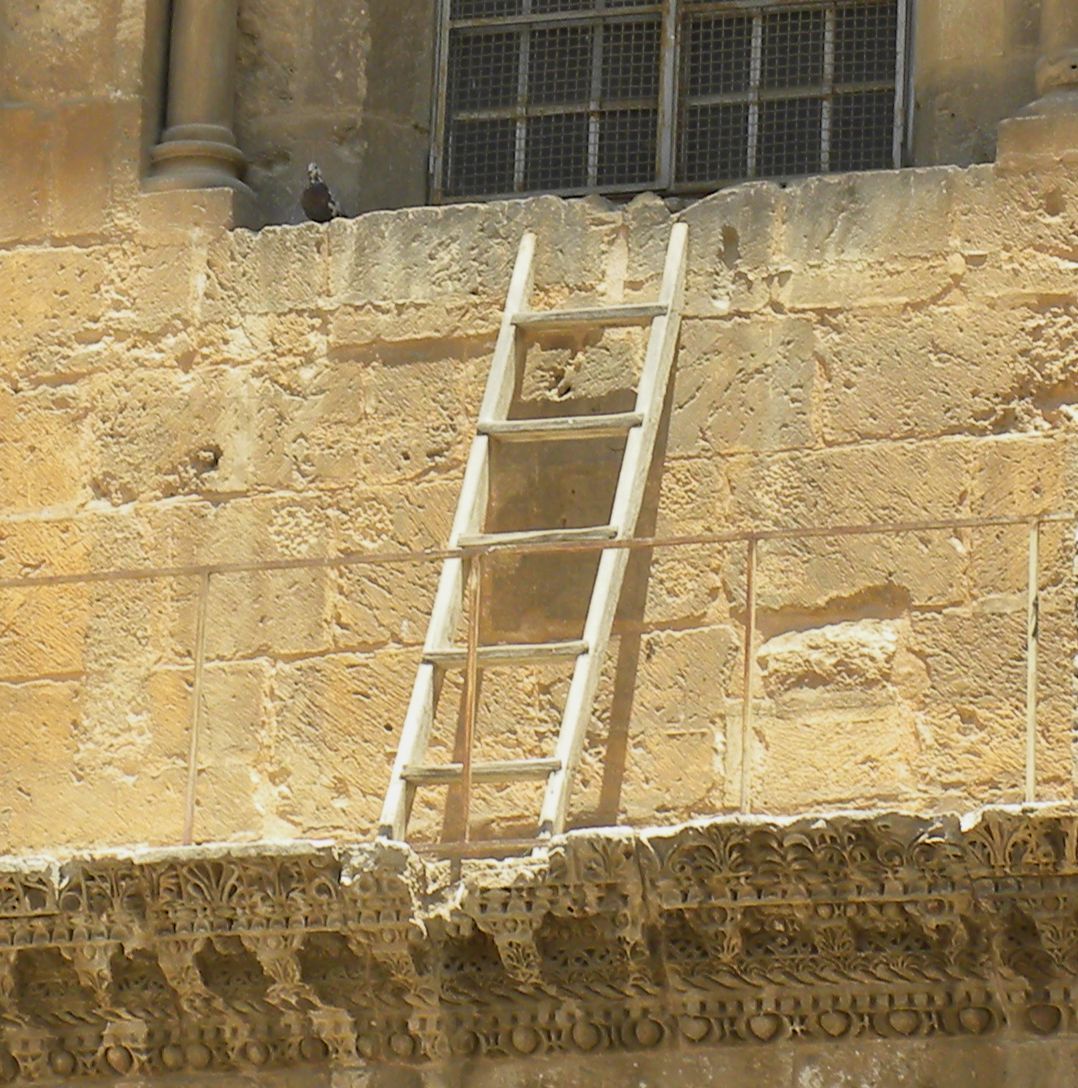X: Ladder
Not every step is in a direction.

Good morning. Today is décadi, the 10th of Fructidor, Year CCXXXI. We celebrate l'échelle, a tool for getting the fruit out of the high branches of the trees.
So there's a church you've probably heard of in Jerusalem. It's the Church of the Holy Sepulchre, which, according to a tradition dating back to the 4th century AD, contains the site of both the crucifixion and the tomb of Jesus. It's a church that, because of its undisputed importance to Christianity, has managed to remain in Christian hands despite varying religious rule (mostly Muslim) in the centuries since. And that's the last time I'll use the word "undisputed" because things get crazy from here.
What are "Christian hands?" At the moment, it's an uneasy alliance among the Roman Catholics (who play the role of cool daddy), Greek Orthodox (who bring the passion, no pun intended), Armenian Apostolic (your challengers to the throne), and a troika of little ancient brothers known as the Coptic Orthodox, Syrian Orthodox, and Ethiopian Orthodox. The rules governing the church are complex, detailed, rigid, and absurd. Each sect controls certain parts of the building absolutely, and other parts are shared on an uneasy timetable.
The apportionments are minute. The Copts and Ethiopians both claim the same patch of roof, but it's the Copts who have managed to keep a monk sitting in a chair on it day and night for decades to secure that claim. One day, one of those monks scooted his chair an arm's length to the left to catch some shade, and the Ethiopians perceived this as war. Eleven monks were hospitalized in the fistfight that resulted. This isn't a charming tale of old-timey chivalry. It happened in 2002.
The agreement that governs this unworkable tragedy of the commons – the church is falling into serious disrepair because no two sects can get an agreement together on how to repair things – was hammered out in 1757 (renewed in 1853) in a document known as the status quo. At some point a few decades before that, someone put a ladder on one of the church ledges, perhaps to do repair work? Or to just access some sunshine? Nobody's sure. The ladder was in an engraving of the church from the 1720s, though, so its location became governed by the status quo. The ladder belongs to no sect, because nobody knows who put it there to begin with. Thus, it has become the infamous Immovable Ladder, and it has sat there ever since.
More or less. In 1997, a Protestant (as if this church needed more sects) named Andy (this is all we know) figured out how to get to the ladder and pulled it inside the window. He wanted to prove a point about the absurdity of the status quo, but since the Armenians own the windows (the Greeks own the ledge), to avoid bloodshed, they put the ladder back and added bars to the windows.

The ladder is made of cedar. It will likely crumble someday. As an act of God, it's hard to say whether such crumbling will be above the law or subject to six interpretations of it.
Churches are funny institutions. They survive on a whole lot of status quo, but they also fight like hell for change. In theory, a stable status quo that has lasted for 250 years should be relaxing. In reality, it's full of frequent fistfights and byzantine rules.
I think about that ladder and the bizarre contractions of the status quo whenever someone tries to interpret the constitution of the United States. Here we are, just another 250-year-old agreement that feels both unfinished and unfathomably historical at the same time. Why can't we just move the ladder? We ask that until someone from the wrong side grabs it.
Today's card: Ace of hearts

The upshot of your aid will be a renewal of the relationship, but not in a return to form. Instead, expect a metamorphosis into a completely different kind of relationship. This may seem painful, even bad, but ultimately it's a good thing for your friend, and therefore a healthy thing for you as well.



